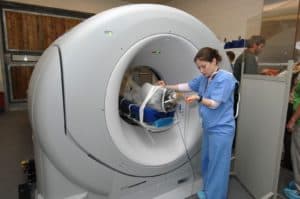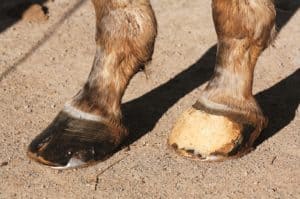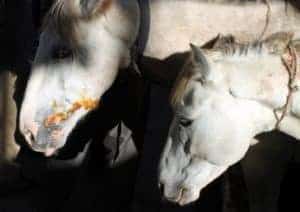
Current Thoughts on the Significance of Mycotoxins
Mycotoxins are harmful compounds that specific molds and fungi produce in soils, grains, and forages when moisture levels permit.

Mycotoxins are harmful compounds that specific molds and fungi produce in soils, grains, and forages when moisture levels permit.

Learn how computed tomography (CT), MRI, and nuclear scintigraphy can help vets diagnose issues within horses’ bodies.
Reported diseases include African horse sickness, strangles, herpesvirus, piroplasmosis, salmonellosis, and more.

Get tips on how you and your horse can avoid contracting a tick-borne disease.

Learn how horses contract Lyme disease, what clinical signs to watch for, how to treat it, and more.

Infection of pregnant mares with pathogenic leptospires can result in abortion; stillbirth; live, nonviable foals; and, rarely, viable foals.

One veterinarian shares his thoughts on how we can mentor the horsemen and veterinarians of the future.
Reported diseases include strangles, equine herpesvirus, influenza, equine infectious anemia, and more.

The Thoroughbred foot’s relatively thin walls and sole make it more susceptible to trauma, injury, and hoof capsule distortion.
The strain has now been reported in horses in many European countries as well as in a single Canadian horse. Zoonotic infection from a horse has also been reported.
All 77,001 serum samples tested for equine infectious anemia (EIA) in Kentucky in 2013 were negative for the disease.
Reported diseases include strangles, influenza, herpesvirus, piroplasmosis, atypical myopathy, and hendra.
Following these six suggestions based on considerable research could make the difference between success and failure in a crisis response.

This neglected disease has a significant welfare impact on working equids and has economic importance to many resource-poor owners with inadequate access to animal health services who rely on animals for their livelihoods.

The most common way adult horses contract the disease is by eating feed, such as hay or grain, that contains animal remains.
One Health recognizes that human health, animal health, and the environment are all interconnected.
Stay on top of the most recent Horse Health news with